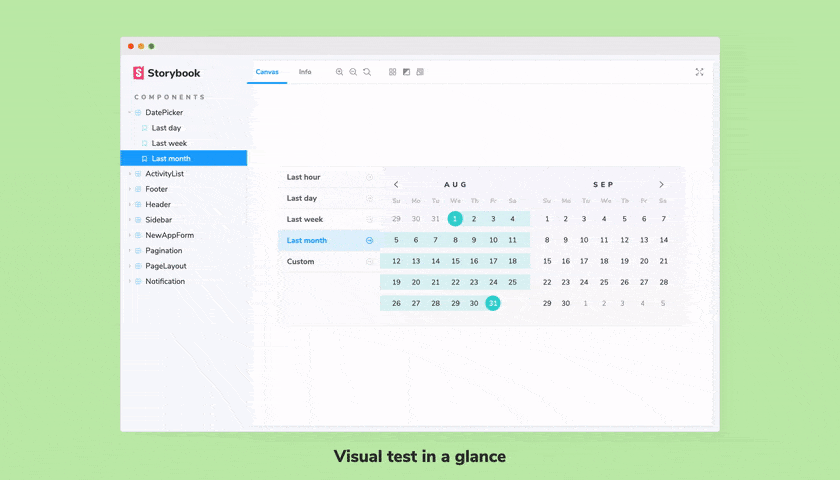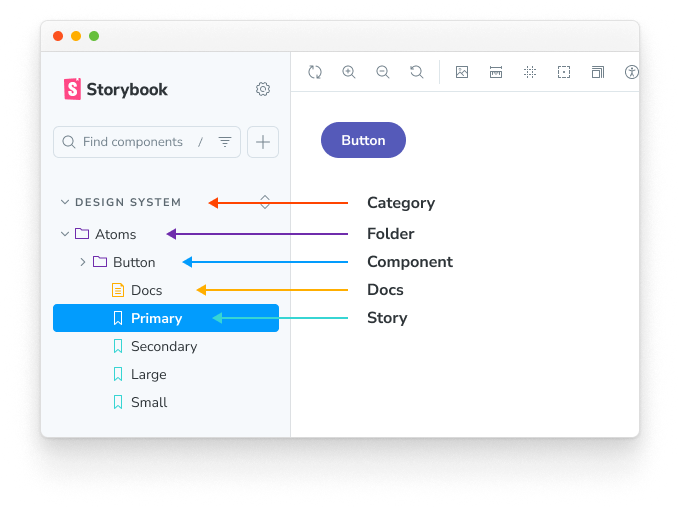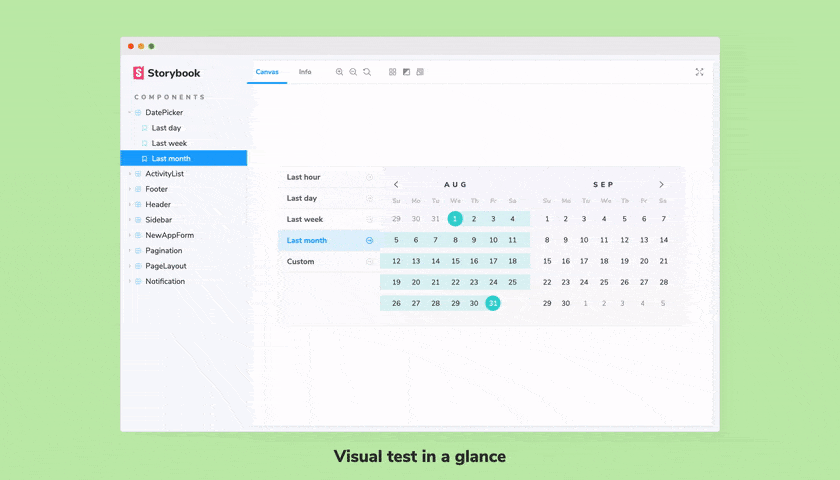The JavaScript ecosystem is in a constant state of evolution, and one of the most significant undercurrents of the past few years has been the steady, deliberate shift from CommonJS (CJS) to ECMAScript Modules (ESM). This transition represents more than just a syntax change; it’s a fundamental move towards a more modern, performant, and secure web. In a landmark development for front-end developers, Storybook, the industry-standard UI component workshop, is embracing this future by going all-in on native ESM. This is massive Storybook News, signaling a new era for developer experience (DX) and tooling simplification.
This strategic move away from its CJS roots isn’t just about keeping up with trends. It’s a conscious decision to improve performance, streamline configurations, and align with the trajectory of the entire JavaScript ecosystem, from Node.js to modern bundlers like Vite. For developers working with frameworks like React, Vue, and Angular, this change simplifies dependencies, reduces build complexities, and unlocks new potential for optimization. In this comprehensive article, we’ll explore the technical details behind this shift, what it means for your projects, and how you can leverage Storybook’s ESM-first approach to build better, faster component libraries.
The Great Divide: Understanding CJS vs. ESM in Modern Development
To fully appreciate the gravity of Storybook’s transition, it’s essential to understand the two module systems that have dominated the JavaScript landscape. For years, they’ve coexisted, often creating a complex and sometimes frustrating interoperability challenge for developers.
Legacy Lane: CommonJS (CJS)
CommonJS was born out of a need for a module system in server-side JavaScript with Node.js. Its design is synchronous, which works well on a server where modules are read directly from the filesystem. You’re likely familiar with its syntax:
require(): A synchronous function to import a module.module.exports: An object used to export public members from a module.
Here’s a classic CJS example:
// utils/formatters.js (CJS)
function formatDate(date) {
return new Intl.DateTimeFormat('en-US').format(date);
}
function formatCurrency(amount) {
return new Intl.NumberFormat('en-US', { style: 'currency', currency: 'USD' }).format(amount);
}
module.exports = {
formatDate,
formatCurrency,
};
// component.js (CJS)
const { formatDate } = require('./utils/formatters');
console.log(formatDate(new Date()));The synchronous nature of CJS and its dynamic properties made it difficult for build tools to perform static analysis, which is crucial for optimizations like tree-shaking (eliminating unused code).
The Modern Standard: ECMAScript Modules (ESM)
ESM is the official, standardized module system for JavaScript, introduced in ES2015 (ES6). It was designed from the ground up to be statically analyzable and to work in both browser and server environments. Its syntax is declarative:
import: A keyword to bring modules into the current scope.export: A keyword to expose members to other modules.
Let’s rewrite the previous example in ESM:
// utils/formatters.js (ESM)
export function formatDate(date) {
return new Intl.DateTimeFormat('en-US').format(date);
}
export function formatCurrency(amount) {
return new Intl.NumberFormat('en-US', { style: 'currency', currency: 'USD' }).format(amount);
}
// component.js (ESM)
import { formatDate } from './utils/formatters.js'; // Note the required file extension in Node ESM
console.log(formatDate(new Date()));The key advantage of ESM is its static structure. The import and export statements are resolved at compile time, not runtime. This allows bundlers to “see” exactly which parts of a module are being used and safely discard the rest, leading to smaller, more efficient bundles. This is a major win for performance-focused frameworks and a big topic in Vite News and Next.js News.

Storybook’s Leap Forward: Embracing Native ESM
For a long time, Storybook, like much of the Node.js ecosystem, was built on a CJS foundation. This meant configuration files (like main.js and preview.js) used CJS syntax. While bundlers like Webpack and Vite could process ESM within your stories, the core of Storybook itself was CJS. The recent shift changes this, aligning Storybook’s core with the modern standard and bringing a host of benefits.
Why This Move is a Game-Changer
- Simplified Configuration: No more context-switching between CJS for Storybook config and ESM for your components. Your entire codebase can now be consistently ESM.
- Improved Performance: ESM enables more effective tree-shaking and lazy-loading, potentially leading to faster Storybook startup and build times, especially in large projects.
- Ecosystem Alignment: Modern tools are ESM-first. Vite, a popular choice for Storybook builders, is natively ESM. This move reduces friction and eliminates layers of compatibility shims, leading to a more stable and predictable development environment. This is great React News for developers using cutting-edge tooling.
- Enhanced Security: The static nature of ESM makes it harder to execute certain types of supply chain attacks that rely on dynamic or conditional
require()calls to obfuscate malicious code. Static analysis tools can more easily trace dependencies in an ESM project.
Updating Your Storybook Configuration
Migrating your Storybook configuration to ESM is remarkably straightforward. The primary change is in your .storybook/main.js (or .ts) file. You’ll switch from module.exports to the export default syntax. You also need to signal to Node.js that your project is an ESM project by adding "type": "module" to your package.json.
Here’s a before-and-after comparison of a typical Storybook configuration file:
// .storybook/main.js (BEFORE - CJS)
module.exports = {
stories: ['../src/**/*.mdx', '../src/**/*.stories.@(js|jsx|ts|tsx)'],
addons: [
'@storybook/addon-links',
'@storybook/addon-essentials',
'@storybook/addon-interactions',
],
framework: {
name: '@storybook/react-vite',
options: {},
},
docs: {
autodocs: 'tag',
},
};
// .storybook/main.js (AFTER - ESM)
/** @type { import('@storybook/react-vite').StorybookConfig } */
const config = {
stories: ['../src/**/*.mdx', '../src/**/*.stories.@(js|jsx|ts|tsx)'],
addons: [
'@storybook/addon-links',
'@storybook/addon-essentials',
'@storybook/addon-interactions',
],
framework: {
name: '@storybook/react-vite',
options: {},
},
docs: {
autodocs: 'tag',
},
};
export default config;Notice the change is purely syntactical. The configuration object itself remains the same. This elegant transition ensures that developers can adopt the new standard with minimal effort.
Practical Implications for Your React and Next.js Projects
This ESM shift in Storybook has a ripple effect across the ecosystem, particularly for those building with modern frameworks. Whether you’re using React Native News frameworks like Expo or web frameworks like Remix News or Gatsby News, a unified module system simplifies your entire development workflow.
Writing Modern, ESM-First Stories
While you could already write your stories in ESM, the full ecosystem alignment encourages best practices. Component Story Format (CSF) 3.0, with its auto-title generation and named exports for stories, feels even more natural in an ESM-first world.
Consider this modern React story for a `Button` component. It leverages ESM named exports to define multiple states of the component cleanly. This approach is highly compatible with tools like React Testing Library News and Jest News, as each story can be imported and tested individually.

// src/components/Button.stories.jsx
import { Button } from './Button';
// The default export contains metadata about the component
export default {
title: 'UI/Button',
component: Button,
argTypes: {
backgroundColor: { control: 'color' },
},
tags: ['autodocs'], // Enables automatic documentation
};
// Each named export is a distinct story
export const Primary = {
args: {
primary: true,
label: 'Button',
},
};
export const Secondary = {
args: {
label: 'Button',
},
};
export const Large = {
args: {
size: 'large',
label: 'Button',
},
};
export const Small = {
args: {
size: 'small',
label: 'Button',
},
};This clean, declarative format is the future of component documentation and testing. It integrates seamlessly with state management libraries like Zustand News or Redux News and data-fetching hooks from React Query News or Apollo Client News, as you can wrap stories with the necessary providers.
Navigating the Lingering CJS Dependencies
The transition to a pure ESM world won’t happen overnight. You will inevitably encounter a crucial dependency that is still only available as a CJS module. Fortunately, modern bundlers are adept at handling this “dual-module” hazard.
Vite, for example, pre-bundles dependencies and can often convert CJS modules to ESM on the fly. However, some packages with complex dynamic requires might need a little help. You can provide hints in your `vite.config.js` to ensure they are processed correctly.
// vite.config.js
import { defineConfig } from 'vite';
import react from '@vitejs/plugin-react';
export default defineConfig({
plugins: [react()],
optimizeDeps: {
include: [
// If a CJS dependency is causing issues, explicitly tell Vite to process it.
'legacy-cjs-library',
],
},
});This configuration tells Vite to find `legacy-cjs-library` and convert it to ESM during its dependency optimization step, making it available for `import` statements in your code. This ensures that even as Storybook moves forward, you have a clear path for maintaining compatibility with the rest of the ecosystem.
Best Practices and Optimization in an ESM World
Adopting Storybook’s ESM-first approach is more than a simple syntax update. It’s an opportunity to modernize your development practices and optimize your workflow.

Tips for a Smooth Transition
- Start with
package.json: Before changing any Storybook files, add"type": "module"to your project’s rootpackage.json. This is the global switch that tells Node.js to treat.jsfiles as ESM. - Update All Config Files: Convert not just
main.js, but alsopreview.jsand any other custom configuration files in your.storybookdirectory to use ESM syntax (import/export). - Prefer ESM Dependencies: When adding new libraries to your project, check if they offer a native ESM entry point. This reduces the burden on your bundler and avoids potential compatibility issues.
- Embrace Modern Syntax: Take advantage of top-level
awaitin your configuration or setup files, a powerful feature enabled by ESM that can simplify asynchronous initialization.
The Future is Fast and Unified
Storybook’s commitment to ESM is a strong indicator of where the industry is headed. As more tools and libraries follow suit, the interoperability problems that have plagued JavaScript development will begin to fade. This unified module system will lead to faster build tools, more reliable dependency management, and a simpler mental model for developers. Whether you are working with web animation libraries like Framer Motion News, form managers like React Hook Form News, or end-to-end testing frameworks like Cypress News and Playwright News, a consistent module system benefits everyone.
Conclusion: A New Chapter for Storybook and the Web
Storybook’s full embrace of ECMAScript Modules is a pivotal moment. It’s a bold step that prioritizes developer experience, performance, and future-readiness over legacy compatibility. By aligning with the official JavaScript standard, Storybook not only improves its own product but also helps push the entire ecosystem forward. This move simplifies project setups, enhances security, and unlocks the full potential of modern build tools.
For developers, this is a clear signal: the future of JavaScript is ESM, and the tools you love are getting on board. Now is the perfect time to audit your own projects, update your configurations, and embrace the clean, efficient, and powerful capabilities of a fully ESM-native workflow. The latest Storybook News is a win for everyone, paving the way for a more streamlined and robust era of component-driven development.











